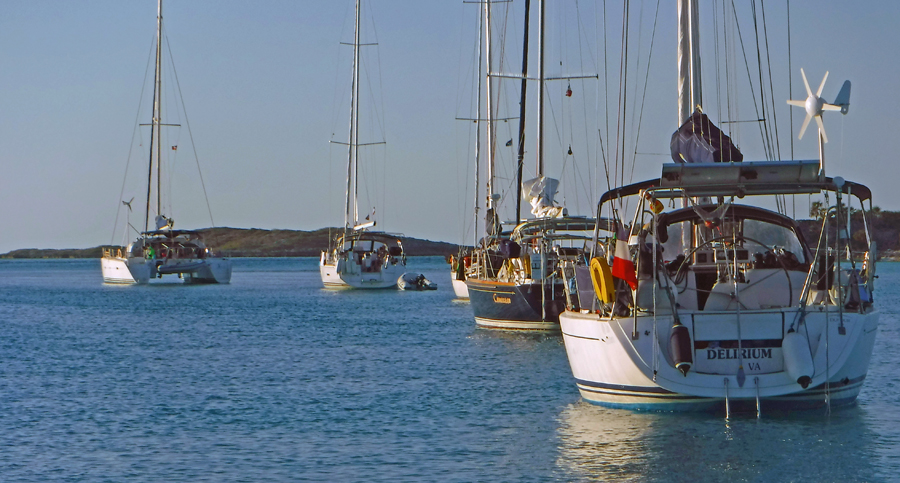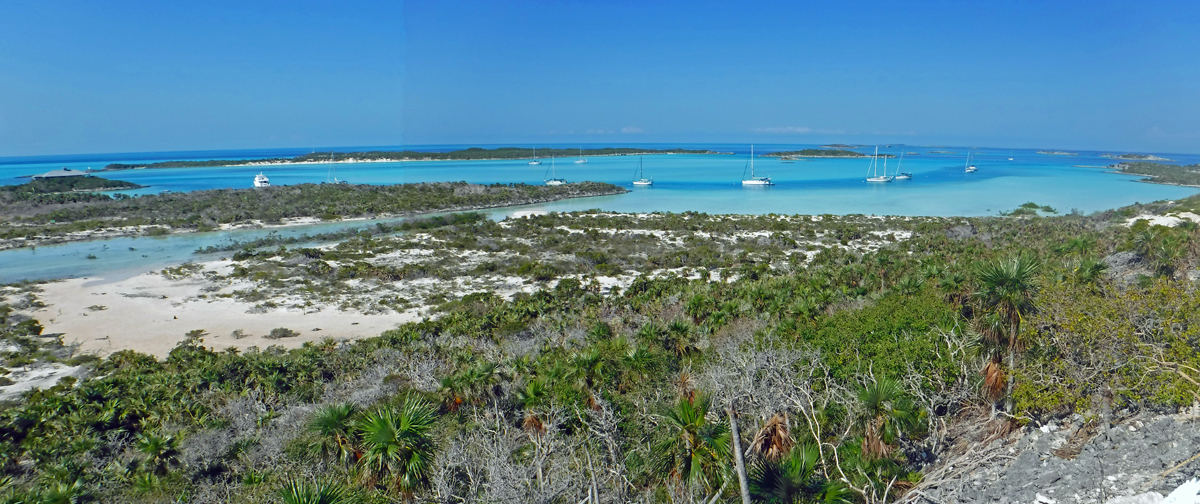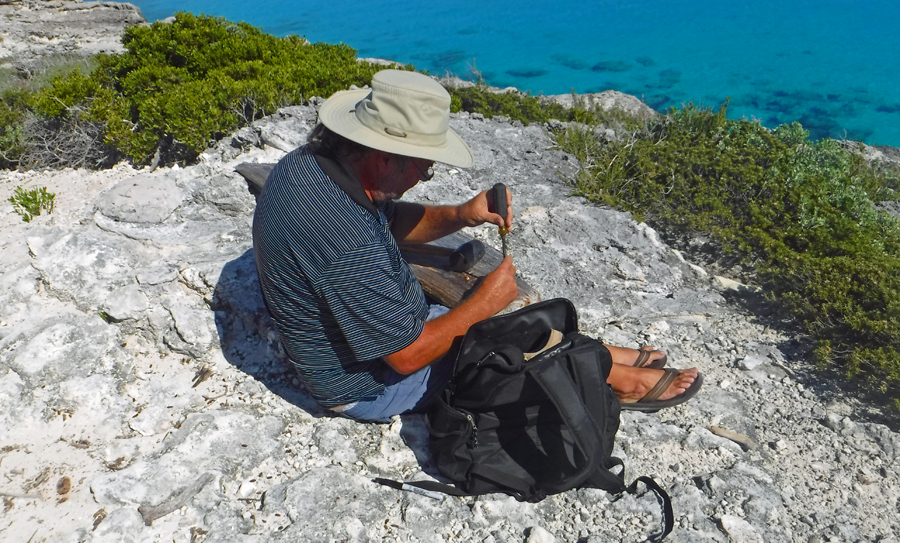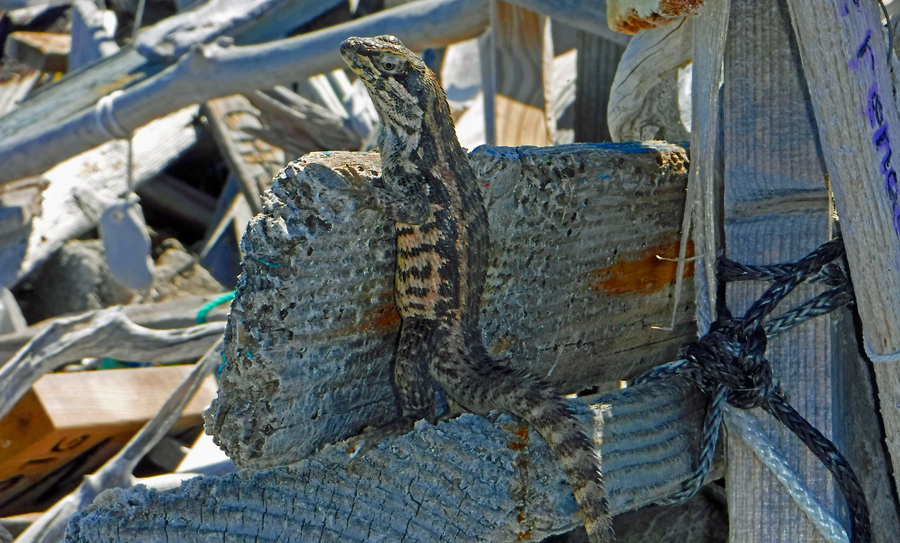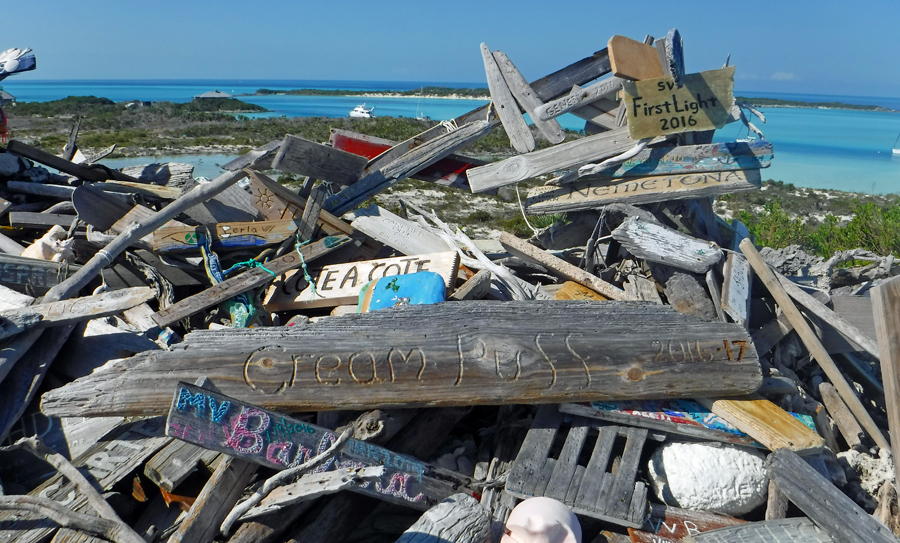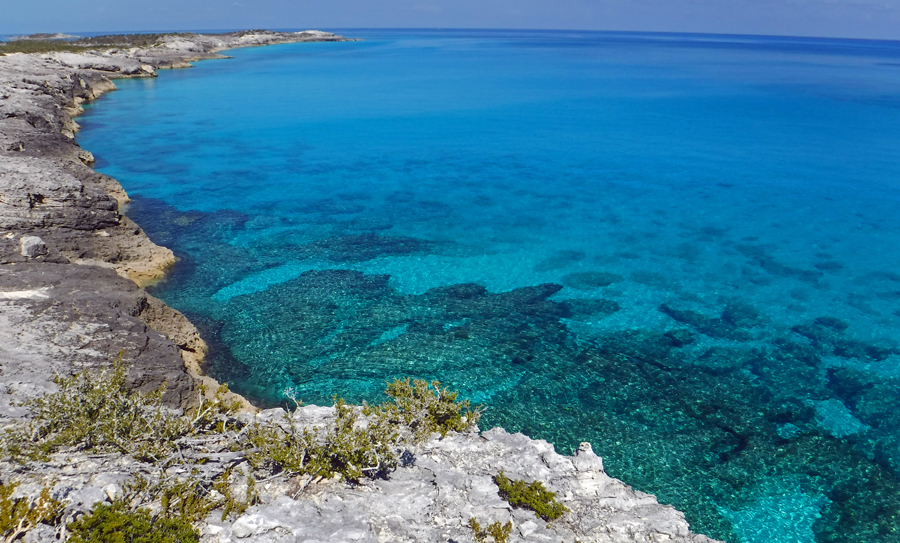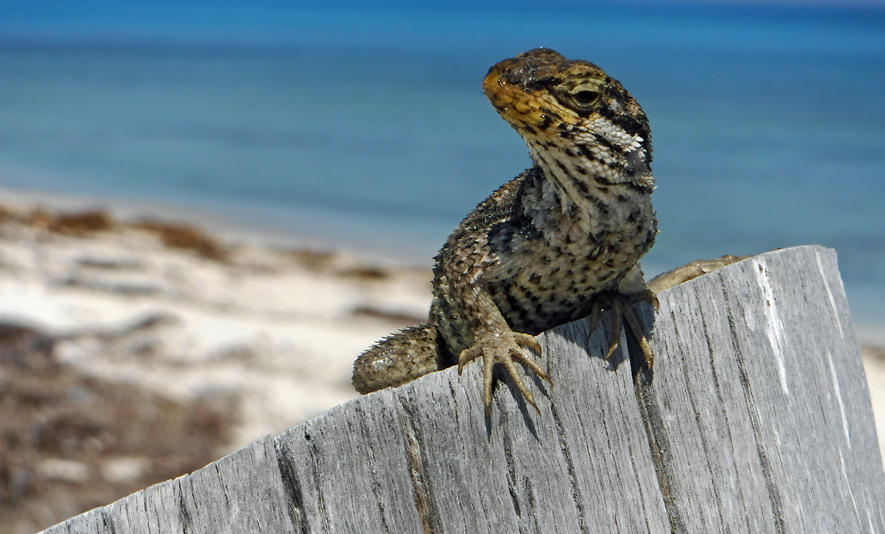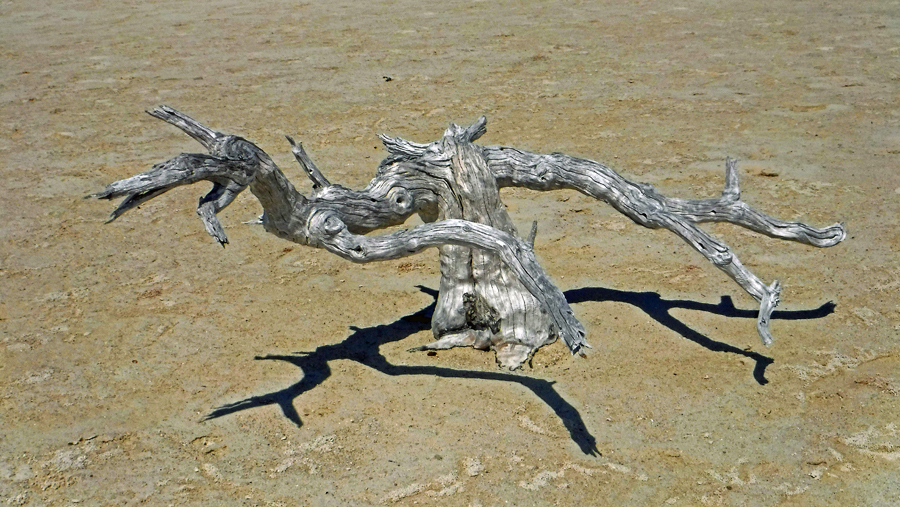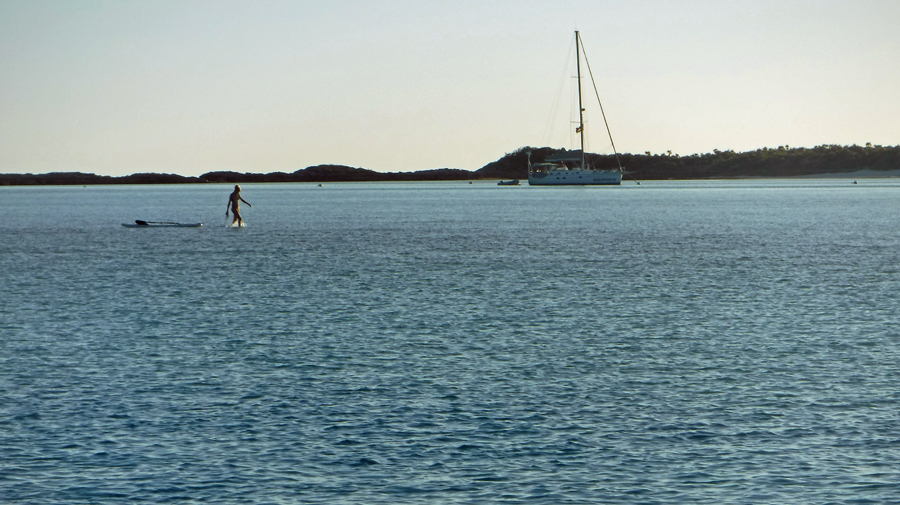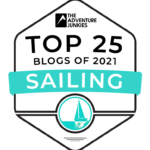Every now and then we have a day that puts a bounce in our step and wind in the sails. Last year I posted an encounter with some dolphins generating a memory I will cherish forever. I didn’t think that could be topped. I was wrong.
We are on a mooring buoy at Warderick Wells inside the Exuma Land and Sea Park (ELSP). The park protects everything living for thousands of square miles. Because of the protection the wildlife here is not timid of any human presence. In fact, it is sometimes a challenge to avoid stepping on lizards when hiking. They tend to just stare up at us and hope we see them. Fish will swim up to people when snorkeling as if to say, “Hello. Nice to see you. Thanks for visiting our reef. Make yourself at home.” Lobsters are massive as they can grow to a ripe old age without fear of being tossed into a pot and eaten for dinner. The common saying to the park visitors is, “Take memories. Leave only bubbles or footprints.”
Warderick Wells has a limited number of buoys. Being it is a popular spot for cruisers, it can be mighty difficult to obtain a mooring. Last year we joined the ELSP Support Fleet making a small donation to the park. Members of Support Fleet are bumped to the top of the reservation list and can enjoy two free nights offsetting most of cost of the donation. The reservation system is very entertaining. Each morning at 9 AM on the VHF radio channel 9, the park warden will ask the moored boats if they plan to depart. Once on a buoy, a boat is allowed to stay as long as they are willing to pay. The fees range from $20 to $100 per day depending on the size of the boat. Our daily fee is $40, and worth every penny! If a boat announces it plans to leave, the mooring buoy is then assigned to a vessel on the waiting list. The waiting list is created the day before. So, after the Warden asks for departing vessels, the next 10 minutes is filled with boats trying to get on the list for the next day or radioing in to find out if they made the cut for that day. The boats all require different needs regarding their length and draft (the amount of water required to keep the boat from touching the bottom). Because the mooring area is narrow and shallow in some spots, not all vessels can tie to the same buoys. The Warden tries to juggle the flood of radio calls with the few open buoys. By 9:30 AM, some sailors are elated and make their way toward the park; others are disappointed and hope some departing boats create more vacancies the next day.
Inside the Wardens office, there are maps of all the park’s cays with marked locations of snorkeling or diving areas. One of the areas marked was right under Cream Puff’s number nine mooring. It is the remains of an old sailboat. It has since become home to an abundance of the park’s fish. There is not much left of the boat. Years under saltwater are not kind to manmade objects. Many of the parks visitors came along side to ask us if we knew the location of the wreck. We told them to tie their dinghy to our bow cleat and jump in the water. Because of this we meet some new people, had some great conversations and will no doubt see these folks again as we make our way down the Exuma island chain. Other reefs in the park marked on the map have moorings to tie up the dinghy. It was at one of these locations we had our Jacques Cousteau experience.
Toward the southern end of the mooring field is a reef we decided to snorkel. The reef abuts the deeper water channel where boats enter and leave the mooring field. While on the edge of the reef near the deeper water, we had an encounter with a family of giant spotted eagle rays. I say family since I think it was a family. As I write this, I do not have an internet connection so I can’t look up the giant spotted eagle ray’s ethology. There was one massive ray, easily 7 feet across, three slightly smaller rays and three smallish rays (about 4 feet wide). The family approached from a cut in the northern passage and swam up the deeper channel. When they came near us, they all circled and then departed the way they came it. It was at this moment I realized I had forgotten to get the underwater camera before jumping into the water. For about ten minutes we were surrounded by this family of rays and could clearly see every detail of their huge bodies. We both watched in awe as these magnificent creatures gracefully flew underwater. I found myself holding my breath making the moment even more serene as I hung weightless and silent in the crystal clear water taking in a life moment to cherish forever.

